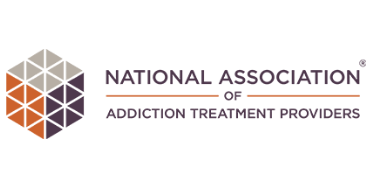Fentanyl is a potent synthetic opioid that binds to opioid receptors in the central nervous system, producing intense pain relief, sedation, and drowsiness, but also causing dangerous side effects like respiratory depression, clammy skin, pinpoint pupils, and a high risk of overdose. While it’s sometimes prescribed for severe pain or cancer pain, misuse—especially of illicit drugs or counterfeit pills—can quickly lead to fentanyl addiction and substance use disorder. Beyond the physical effects, fentanyl use deeply impacts a person’s mental health, emotional well-being, and sense of purpose, often leading to isolation, cravings, and spiritual disconnection.
A History On Fentanyl
Fentanyl was first developed in 1959 by Dr. Paul Janssen as a prescription drug for managing severe pain, particularly in surgical settings and later for cancer pain. As a synthetic opioid, it offered faster and more potent pain relief than other opioid analgesics like oxycodone or morphine. Over the decades, fentanyl became available in various medical forms—lozenges, nasal sprays, skin patches, and injectables—allowing healthcare professionals to target acute and chronic pain effectively under strict supervision.
However, fentanyl’s high potency also made it a target for misuse. In recent years, illicit fentanyl—often mixed with counterfeit pills, methamphetamine, or even MDMA—has become a driving force behind the national surge in opioid overdose deaths. Agencies like the DEA, Department of Health, and National Institute on Drug Abuse (NIDA) now classify fentanyl as a major contributor to the ongoing opioid crisis.
How Fentanyl Breaks Down the Body
Fentanyl’s physical effects are swift and powerful—what begins as pain relief can quickly spiral into life-threatening complications. This synthetic opioid overwhelms the central nervous system, slowing down vital functions and pushing the body toward dependency.
- Common physical effects:
- Respiratory depression, which can be fatal in high doses
- Intense drowsiness and sedation
- Digestive issues like constipation and nausea
- Clammy skin, pinpoint pupils, and drops in blood pressure
- Heightened risk of overdose, especially with illicit drugs or counterfeit pills
- Rapid development of physical dependence and withdrawal symptoms
The Mental Toll of Fentanyl Use
Fentanyl not only clouds the body—it hijacks the mind. As tolerance builds, the brain becomes chemically dependent, creating a loop of cravings, anxiety, and emotional instability that fuels ongoing opioid use.
Psychological and cognitive effects:
- Compulsive drug-seeking behavior and obsession with the next dose
- Increased depression, anxiety, and emotional numbness
- Impaired thinking, memory loss, and poor decision-making
- Heightened risk of substance use disorder
- Co-occurring disorders, especially when combined with other substances like methamphetamine or oxycodone
Losing Connection: Fentanyl’s Spiritual Impact
Beyond the physical and mental consequences, fentanyl can sever a person’s sense of self. Many struggling with fentanyl addiction describe feeling spiritually bankrupt—cut off from their values, loved ones, and inner peace.
Spiritual consequences:
- A deep sense of emptiness and disconnection
- Loss of purpose or direction in life
- Feelings of shame, guilt, and hopelessness
- Breakdown of meaningful relationships
- Isolation from community, faith, and personal identity
What About Fentanyl Makes It So Dangerous?
Fentanyl’s danger lies in its potency, prevalence, and unpredictability. As a synthetic opioid, it’s up to 50 times stronger than heroin and 100 times more potent than morphine. This means even the smallest miscalculated dose—especially when taken outside of a medical setting—can be life-threatening. What’s more, much of the fentanyl circulating today is illicitly manufactured, often mixed with other illicit drugs like methamphetamine, oxycodone, or even MDMA without the user’s knowledge. These counterfeit pills look identical to prescription medications but are frequently laced with lethal amounts of fentanyl.
The DEA and National Institute on Drug Abuse both cite fentanyl as a major driver of rising drug overdose deaths nationwide. Its fast-acting nature leaves little room for intervention once an overdose begins, and those struggling with substance use disorder may unknowingly develop a fatal tolerance. Combined with its availability through illegal markets, fentanyl has become a hidden threat in the broader opioid crisis, making professional treatment and prevention efforts more urgent than ever.
What Happens During a Fentanyl Overdose?
During a fentanyl overdose, the drug overwhelms the body’s central nervous system, slowing down essential functions—especially breathing. As a potent synthetic opioid, fentanyl binds tightly to opioid receptors, shutting down the brain’s ability to regulate respiration. This leads to respiratory depression, where breathing becomes dangerously slow, shallow, or even stops altogether. Without enough oxygen, vital organs like the heart and brain begin to fail within minutes.
As the overdose progresses, you may see pinpoint pupils, clammy skin, a drop in blood pressure, and unconsciousness. The person may make choking or gurgling sounds, or become completely unresponsive. Without fast intervention—typically through the nasal spray form of naloxone (Narcan)—the result can be fatal. A fentanyl overdose is a true medical emergency, and immediate medical attention is the only way to prevent permanent damage or death.
Signs of Fentanyl Overdose
Recognizing the signs of a fentanyl overdose can save a life. Because fentanyl is an extremely potent synthetic opioid, overdoses can happen quickly—especially when the drug is unknowingly mixed into counterfeit pills or other illicit drugs. According to the DEA and the National Institute on Drug Abuse, many overdose deaths happen before anyone even realizes what’s occurring.
Common signs of a fentanyl overdose include:
- Pinpoint pupils (very small, constricted pupils)
- Cold or clammy skin
- Blue or gray lips and fingernails
- Slow or stopped breathing (respiratory depression)
- Gurgling sounds or choking
- Extreme drowsiness or inability to wake up
- Loss of consciousness
If you notice any of these symptoms, it’s critical to administer naloxone (Narcan) immediately—ideally through nasal spray—and call 911. Fentanyl overdoses can become life-threatening within minutes, so medical attention should never be delayed. Even if the person becomes responsive, further care is still essential.
It’s Time to Get Help
Fentanyl isn’t just another drug—it’s a life-threatening substance that’s claiming lives at an alarming rate. Whether you or a loved one is misusing prescription opioids, struggling with fentanyl addiction, or unknowingly exposed to counterfeit pills laced with this synthetic opioid, the risk is too great to ignore. The rise in drug overdose deaths, as reported by agencies like the DEA and National Institute on Drug Abuse, shows just how quickly things can turn fatal.
This isn’t just about getting off fentanyl—it’s about rebuilding your life, healing your mental health, and restoring your sense of purpose. If you’re seeing the signs or feeling the weight of this crisis, don’t wait.
Don’t Wait Until It’s Too Late—Your Life Matters
If you or someone you love is struggling with fentanyl use, the risk is real—and the time to act is now. Every moment matters when dealing with a life-threatening opioid like fentanyl. At Detox California, we offer a safe, supportive space to begin the healing process, away from the chaos and danger of addiction.
Reach out today for compassionate, confidential help. You don’t have to do this alone—and you don’t have to wait until things get worse. Let us walk beside you toward recovery.

















